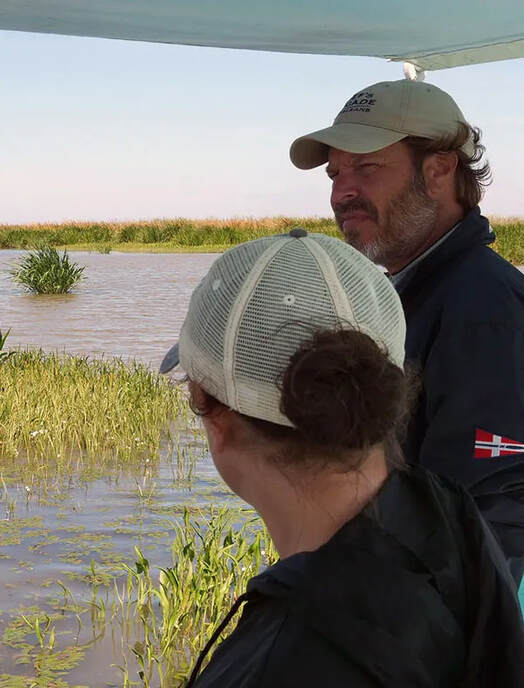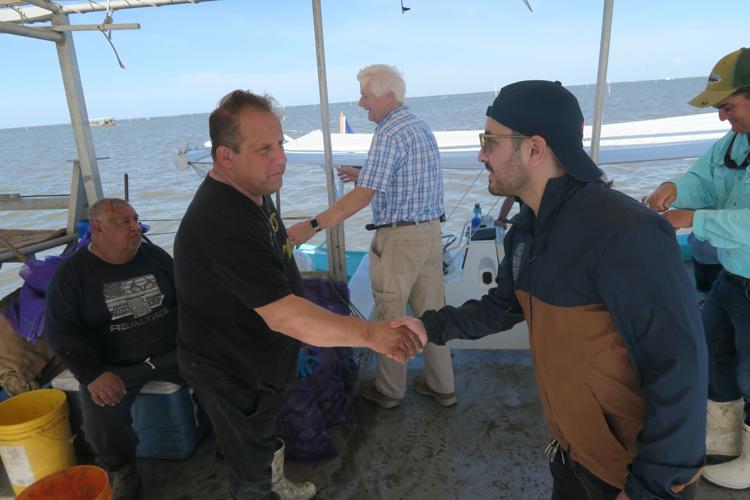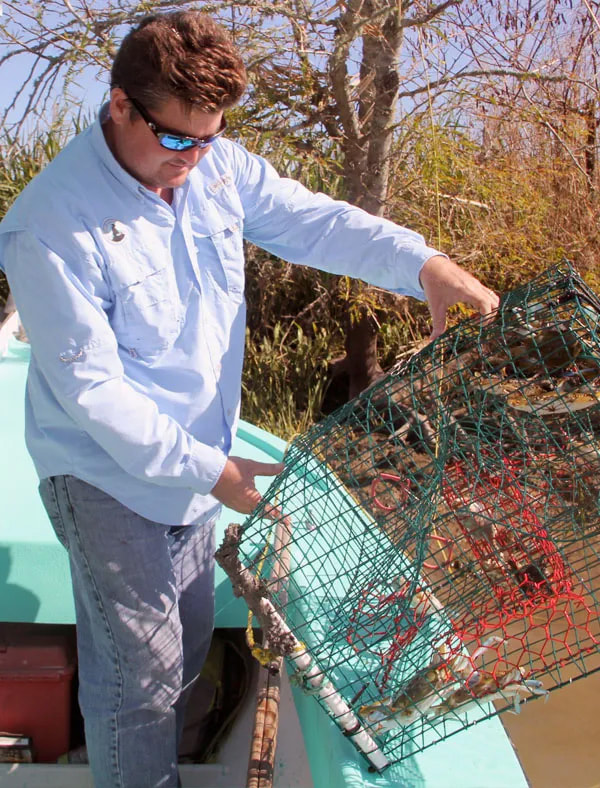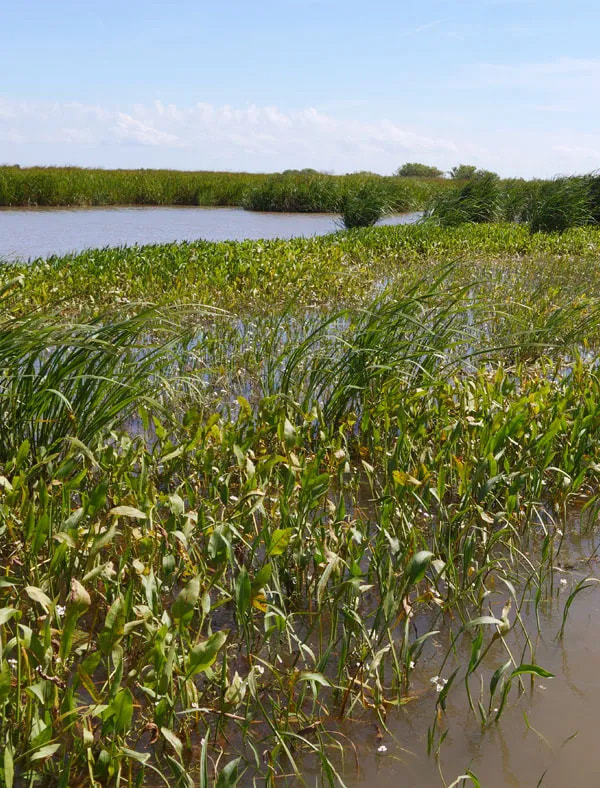|
A seafood platter is known for being piled high with the freshest seafood our Mississippi River has to offer. Once you decide which to eat first—fried oyster, shrimp or catfish—and take that crisp, juicy bite, it’s hard to think of anything else, but, have you ever wondered where your dinner was sourced? Instantly, you may think ‘The Mississippi River, right?’ The answer is yes, but the real answer goes much deeper into the muddy water. Troy Gilbert, the President & Executive Director of Chef’s Brigade, had an idea spark over a cup of coffee one morning. His Chef’s Brigade organization started out of the COVID-19 shutdown, connecting New Orleans city government and restaurants to feed frontline workers and hungry citizens. Since its inception, 3.7 million meals have been served. The meal program is still in-place for future disaster situations like hurricanes and tornadoes. The oyster shell recycling program, in partnership with The Coalition to Restore Coastal Louisiana, is a continuing success in helping rebuild oyster reefs and coastal shorelines. Gilbert wanted to pivot Chef’s Brigade and bridge the gap between New Orleans chefs and the Louisiana coastline. Also a maritime journalist, Gilbert claims to “always have boats on the mind” and then, it clicked. “I thought that we don’t need to bring just a few chefs out to the coast, we need to bring all of them,” Gilbert said. Thus, Chef’s on Boats was born. The new program brings professional chefs, restaurant staff and culinary students face-to-face with the seafood source, giving them a real life view of climate change and our eroding coastline. According to the Louisiana Seafood Board, 75% of U.S. commercial sea catches come from estuaries, and 35% of estuary marshes in the U.S. are in Louisiana. These estuaries are where generational fisherman have been making their living for decades, providing seafood to the legendary restaurant scene that is New Orleans. It’s these fisherman who are Louisiana. “Here in New Orleans, the water is hidden behind these flood walls and levees,” said Gilbert. “The reality is that these oysters are coming from generational fishers. Those stories need to be told.” According to Gilbert, the program has been successful from the start. Every Tuesday morning a registered group gathers in Empire, Louisiana and hops on a boat, led by Captain Richie Blink. Empire is at the bottom of the boot, where the Mississippi River empties into the Gulf of Mexico. It is the fifth largest seafood port in the United States. “We knew this was going to be intriguing to the chefs, to literally climb onto an oyster boat while [the fishermen] are drudging,” Gilbert said. “What we didn’t realize was how intrigued these oystermen were going to be about talking to their customers, because they don’t communicate. There is all this stuff going on in the middle.” The first half of the tour is spent viewing the bountiful, yet, eroding saltwater marshes. Where the Mississippi exits into the Gulf of Mexico, the river’s salinity declines and the Gulf’s begins to pick up. It is prime territory for oyster fishing, and for creating living shorelines to regrow the marsh. Gilbert says it’s a double edged sword. “We’re able to cross the River, about a mile on the other side, where there is a natural diversion that has happened,” says Gilbert, “and we’re able to show them how quickly the River can heal these marshes. But, the problem with that is it kills the saltwater fisheries.” The second half of the trip starts the discussion about the future of seafood in New Orleans’ restaurants based on what may be available 20, 30 years down the line. The loss of wetlands on the Mississippi River disrupts the ecosystems, and what is typically harvested in these areas could possibly change. “We start to discuss what new bounties are available in this marsh,” Gilbert said. “How is the seafood platter in Louisiana potentially going to change and transition in the next 30 or 40 years with the introduction of more of these diversions? Things like frog legs, alligator, duck potatoes?” It’s a mutual experience for the chefs and the oystermen Gilbert mentions. His goal for the Chef’s on Boats program is to bring attention to Louisiana’s eroding coastline, and how restaurants must practice sustainability. Culinary students and educators are also taught about the perils our state is facing from climate change. Gilbert and Captain Blink have picked out specific sites to give participants a good visual representation of how much land has been lost. “To put this real life experience into them, it changes people,” Gilbert said. “For the first time it’s really tangible to them.” Once the crew makes it back to dry land, Gilbert says that’s where the magic begins to happen. Restaurants like Sala NOLA, Riccobono’s Peppermill, Panola Street Café, Maypop, MoPho, Café Degas, Cochon and Gianna have all sent chefs and staff to partake in this free educational experience. Gilbert loves hearing them throw ideas back and forth on the way home, because it’s all connected—New Orleans restaurants, the seafood industry, culinary arts and wetland conservation. He hopes they begin to set short-term and long-term goals which can bring their restaurant into alignment with helping to rebuild sustainable fisheries—something as simple as signing up to be part of the oyster recycling program. “They’re talking back and forth, about different resources, things that could be changed,” said Gilbert. “When that chef hops off the boat, we want them to take back [this experience] to their restaurant and put into practice some immediate things that can help the restaurant treat the coast better. The program is making the climate change real. If you’re running a restaurant, you can have an impact.” Story originally posted on July 19, 2022
0 Comments
Leave a Reply. |







 RSS Feed
RSS Feed
